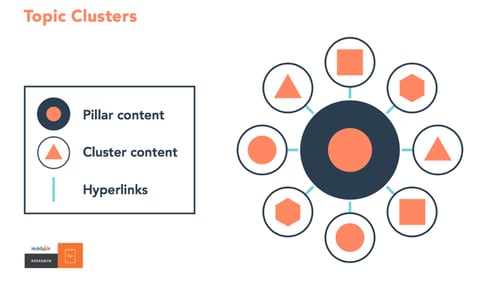
In response to supply chain disruptions caused by the novel coronavirus, the manufacturing industry is once again facing another turmoil called economic uncertainty.
Due to global unease, fears of a global recession, and ongoing supply chain challenges, it's no surprise that many companies are seeking Plan B in the US. But once these potential customers start looking for manufacturers closer to home, a huge opportunity to gain a digital presence arises.
In order to find manufacturing businesses, we need to focus more on SEO. In order to maintain competitiveness in a tough environment, many manufacturers are strengthening their marketing not only for traditional marketing such as trade shows and print ads, but also for SEO.
Are you ready to stop relying solely on underperforming traditional marketing and word of mouth and start seeing new website traffic? First, let's learn the basics of SEO by explaining the best practices we practice with our clients!
Understand Google's goals and rank higher
To effectively optimize a manufacturing website for search engines, it's important to understand its goals and how it's evolving. For example, Google's primary purpose is to provide users with the most relevant and high-quality content. The company's algorithm calculates this based on the user's keyword search intent.
This means that search engines are smart enough to understand the context behind users' search phrases and present the most useful information.
Are you curious why your manufacturing company isn't listed on Google? Read this article to avoid common mistakes.
Until now, Google has made several updates to its search algorithm in order to better understand user intent and provide optimal search implementation results. In the biggest of these updates (the one with names like Panda, Penguin, BERT, etc.), the way search implementation results are displayed has changed drastically.
How can you tailor your manufacturing website to match what your prospects are searching for and provide useful content? Keep reading to learn the basics of developing a basic SEO strategy.
Manufacturing SEO basics and best practices
It's essential for manufacturing companies to align their SEO strategies with Google's goals and audience needs. As millennials and even Gen Z take on leadership roles in the workforce, many manufacturers are beginning to realize that traditional methods no longer work. Also, 73% of millennials are involved in making decisions about purchasing products and services, which means that millennials are often leading decisions about purchasing products or services.
Over the past 10 years, the entire B2B purchasing process has changed. Right now, potential buyers want to learn everything they can before talking to sales. Ten years ago, Forrester discovered that 67% of B2B buyer journeys were done digitally without sales support. Imagine how much that has evolved in recent years.
] In other words, information about products and services must be posted on websites so that they can be easily found online.
But how can manufacturers achieve that? The answer lies in developing an SEO strategy that covers every type of intent of the buyer persona. For B2B manufacturers to have a successful SEO strategy, there are two elements: product keyword strategy and industry trend keyword strategy.
Best Practice #1: Create helpful content that answers specific questions your sales team will ask during the process. Make a list of these questions and make each one an article to post on social media or blog pages, or add to your newsletter.
Product keyword strategy
For manufacturers, products and services are the lifeblood. So, your SEO strategy should begin by brainstorming what your target audience will search online to solve common challenges associated with your business.
This keyword research is usually tailored to specific products and services, and is carried out exactly “at the bottom of the funnel.” It's synonymous with marketing. “They know they have challenges, and they're investigating solutions and partners that can help them.”
Once you've decided on common search terms, group them by category or service. This is how you create SEO topic pillars. This is a proven “topic cluster” model developed by HubSpot. In this model, each keyword included in that topic is associated with a specific page on the website.

All of these pages are interlinked, and pillar pages are a “hub” for SEO power and topical educational content. Think of a detailed Q&A page about a product or service as a pillar page. By linking service pages, articles, and pages that are the pillars of the main topic, you can let Google know that your website is an authority on this topic and deserves a top ranking.
By mapping websites in this way, the structure of the website is easier to understand, navigation is easier to understand, and users can find answers to questions with just a few clicks.
Best Practice #2: Each SEO topic cluster must initially have at least 8-10 keywords. Once you've created initial content for the highest-priority pillars, you can measure where your website visitors are headed and create more of the content you want.
Industry trend keyword strategy
It's essential that manufacturers don't stop focusing solely on keywords relevant to their services and products. That content is effective and helpful, but it's only available to buyers who are close to making a purchase decision, and it's not useful for buyers who are in the early stages of the purchase. To truly demonstrate your company's thought leadership and authority in your domain, it's important to discuss industry trends, major changes in the area of products and services, and discuss your own training programs and employees.
Why is that? That's because 95% of potential buyers aren't actively considering a purchase right now. However, there is also a possibility that they are bored at work and looking for content related to the industry or investigating issues they are facing. This gives you an opportunity to search Google for topics where users have written content and capture those users when those topics are directed to your site. If you help answer customer questions, your business will gain a foothold in their minds, and they may come back for more.
By doing so, you can build brand awareness, credibility, and trust with customers. Once you make your brand memorable and gain that trust, the chances that customers will buy from you (when they're ready) skyrocket.
By using both product and major trending SEO keyword approaches, you can show Google and customers that you are familiar with your products and industry.
Best Practice #3: Each website page must have at least 300 words so Google's site crawler can analyze it. Be sure to include images, headings, and buttons so users can skim through the page.
Seize more opportunities with effective manufacturing SEO
The current economic uncertainty and evolving supply chain environment present a great opportunity for manufacturing companies to strengthen their online presence. By focusing on SEO, manufacturers can reach potential customers and increase brand power.
First, manufacturers need to adopt a two-pronged approach to SEO strategies: targeting product-related keywords and responding to industry trends. By creating content around these key areas, you can establish your brand as an authority and build trust from both Google and your audience. When it comes to creating content for customers and optimizing websites, remember that SEO is a marathon, not a competition. It can take months for visible implementation results to appear.
By prioritizing SEO, you can stay one step ahead of your competitors, drive organic traffic, and generate valuable leads for the manufacturing industry.
For manufacturing companies, if they haven't started their digital strategy yet, now is the time to adapt it.
If you need help getting your manufacturing business on Google's first page, see why other companies choose custom plans using Google's ROI framework.



1 comment